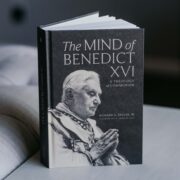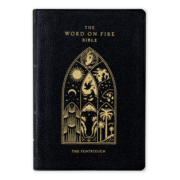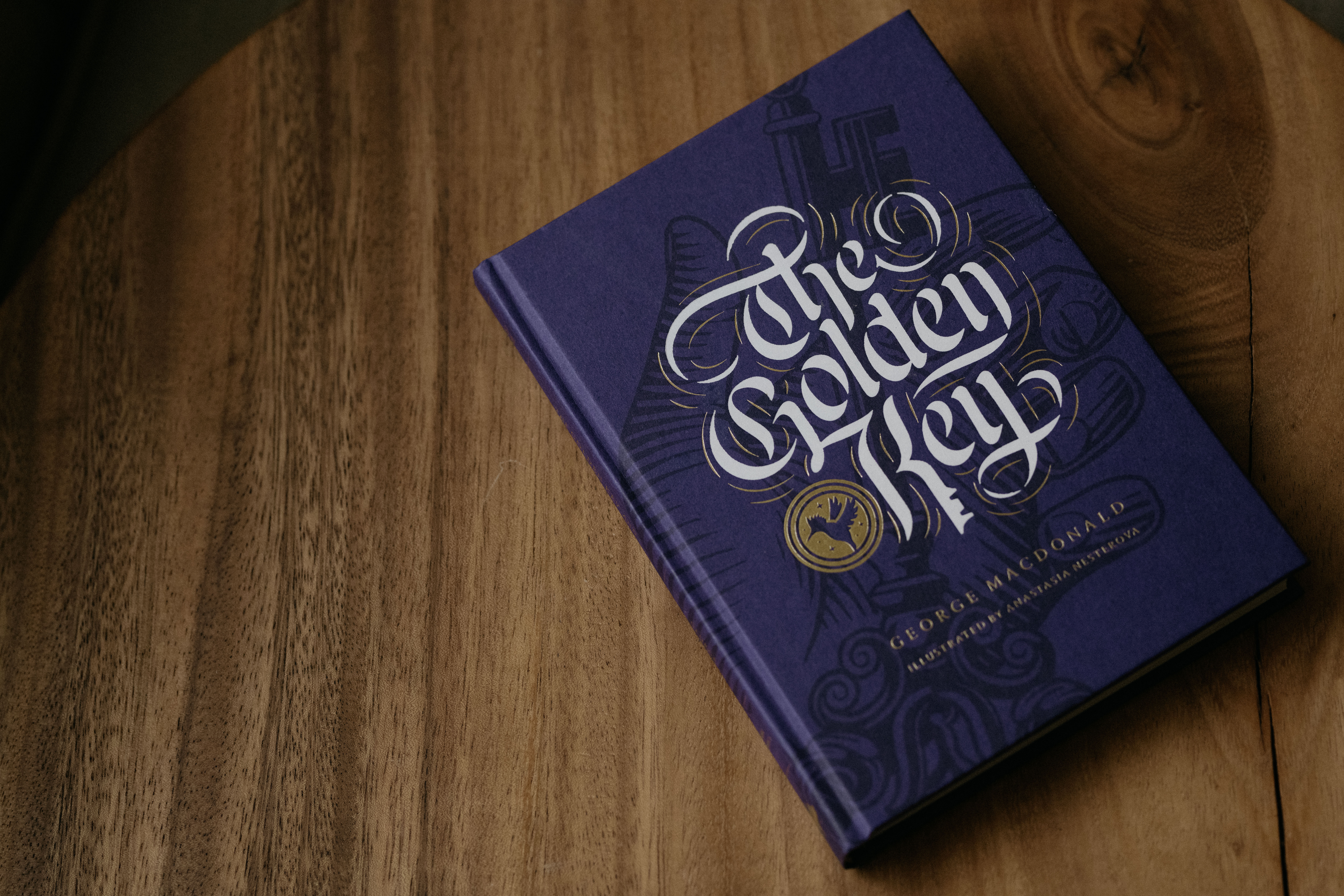C.S. Lewis, “the reluctant convert” and one of the most influential Christian voices of the twentieth century, credited his return to Christian faith to two men. One likely comes as no surprise: the famous English convert—and household name in Christian circles—G.K. Chesterton. The second man has been largely forgotten: a Congregationalist minister from Aberdeenshire named George MacDonald.
And yet, it is difficult to name a writer who had a deeper impact on the Christian literature that followed than this bearded Scottish writer. Chesterton, who considered MacDonald “one of the three or four greatest men of 19th century Britain” aptly noted that he is like “a character in one of his own fairy tales, a true mystic to whom the supernatural was natural. . . . Dr. MacDonald enters fairyland like a citizen returning to his home.” Photographs of MacDonald support Chesterton’s description, presenting an almost otherworldly figure with piercing eyes who could pass for a wise wizard or prophet in any fairy story.
MacDonald’s work set the tone for a whole new genre: fantasy literature.
George MacDonald was born in Scotland in 1824. He grew up in an environment of readers and lovers of good stories with scholars of Celtic fairy tales, poetry, and Shakespeare in his extended family. After studying for a degree from the University of Aberdeen in chemistry and physics, MacDonald became a minister in the Congregationalist church. He married a woman named Louisa Powell, with whom he had eleven children (four of whom they tragically lost to tuberculosis). He published prolifically: theology, collections of his sermons, fiction for adults, and fiction for children, including the popular tale The Princess and the Goblin. Sometimes called “the grandfather” of the Oxford Inklings, he preceded that famous literary set by a few decades.
MacDonald’s work set the tone for a whole new genre: fantasy literature. Without his fantasy works, it’s hard to imagine Alice’s Adventures in Wonderland, Peter Pan, Five Children and It, The Chronicles of Narnia, Redwall, A Wrinkle in Time, or The Graveyard Book ever coming to life (to name a few of the classics from the pens of writers deeply influenced by MacDonald). Madeleine L’Engle called MacDonald “the grandfather of us all—all of us who struggle to come to terms with truth through imagination.”
C.S. Lewis described reading MacDonald’s works as a baptism of his imagination, explaining in a letter to Arthur Greeves, “I know nothing that gives me such a feeling of spiritual healing, of being washed, as to read G. Macdonald.” But what is it about MacDonald’s writing that makes such an impact on his readers? Why should we still be reading “St. Francis of Aberdeen,” as Chesterton called him?

The answer is that MacDonald invites us to view reality with his Christ-formed vision, free from cynicism. MacDonald looks with eyes of otherworldly wonder, an antidote to our own world-weariness. As Lewis points out, “The value of the myth is that it takes all the things we know and restores to them the rich significance which has been hidden by ‘the veil of familiarity’ . . . by putting bread, gold, horse, apple, or the very roads into a myth, we do not retreat from reality: we rediscover it.” In MacDonald’s fairy tales, we can see with fresh eyes because the strange world he shows us highlights the wondrous reality we find ourselves in.
Chesteron colorfully explains:
A curious glow pervades [MacDonald’s] books: the flowers seem like coloured flames broken loose from the flaming heart of the world: every bush of gorse is a burning bush, borning for the same cause as that of Moses. . . . MacDonald was a mystic who was half mad with joy, of a joy all the more violent because it remained mystical. For him the secret of the Cosmos was a secret because it was too good to tell. The stars and all things in his world tingled with the tension of that painful pleasure of the soul. For him the pity of God was so positive as to be a definite passion like thirst; it was a fierce tenderness; he was never tired of saying that his God was a consuming fire. The Mystic believes that a rose is red with a fixed and sacred redness, and that a cucumber is green by a thundering decree of Heaven.
As Editor of Word on Fire Spark—Word on Fire Publishing’s imprint for children—one of my primary goals is to form the imagination of young readers with beauty, truth, and goodness, to orient the child to the Great Story of God’s love and salvation. And one of our newest projects to achieve this mission is our Spark Classics line. This line of beloved children’s classics breathes new life into valuable old books, inviting them back into a place of influence. I can think of no better book to lead this charge than a collection of George MacDonald’s fairy tales paired with fresh, beautiful illustrations. To enter what Chesterton called “the glorious fairyland of George MacDonald” is to enter a world of wildness and mercy, dread and joy, adventure and redemption. It is a world in which our longing for the transcendent is at last satisfied, a kingdom in which evil threatens but does not triumph, a narrative of love that is stronger than darkness.
Our new collection includes three stories: The Golden Key, The Light Princess, and Little Daylight. In The Golden Key, Mossy and Tangle must set out on a journey because they are longing to visit a place they have never been, “the place from whence the shadows fell.” Not even knowing what that place may be but guided by fantastical creatures, they begin searching for the keyhole where they can use the Golden Key. Will their wandering lead them to the strange place calling them home?
If we, too, want to view the world with mystical accuracy, what better lenses could we borrow than those of St. Francis of Aberdeen?
The Light Princess shifts the tone from mystical to comedic. In the kingdom where the story takes place, an evil witch has stolen something very unexpected. She has taken away the princess’s gravity (meaning not only that the princess can fly about like a feather on the wind but also that she cannot be serious about anything). Who can break the spell of evil but the young prince who is willing to sacrifice his very life for the woman he loves?
In Little Daylight, the story also begins with a cursed princess. A witch has turned the proper order of things upside down by cursing Princess Daylight to sleep in the day, be awake in the night, and wax and wane with the changing moon. The goodness of creation has been sickened, and yet a remedy the witch could not have imagined has the power to set right what has gone wrong.
In these stories we see what J.R.R. Tolkien called “eucatastrophe”: “It is the mark of a good fairy-story, of the higher or more complete kind, that however wild its events, however fantastic or terrible the adventures, it can give to child or man that hears it, when the ‘turn’ comes, a catch of the breath, a beat and lifting of the heart, near to (or indeed accompanied by) tears, as keen as that given by any form of literary art, and having a peculiar quality.” This eucatastrophe that we find in fairy tales like MacDonald’s is the echo of the Great Story that turns at the moment of seeming despair, Christ on the cross—the moment that surprises us because it turns excruciating loss into glorious victory.

Acclaimed children’s writer Katherine Paterson notes, “The word reveals the creator—and as our universe in its vastness, its orderliness, its exquisite detail, tells us something of the One who made it, so a work of fiction, for better or worse, will reveal the writer.” If this is so, we can gather from George MacDonald’s writing the miraculous imagination of the writer: a man who, as Chesterton described him, saw “the world bathed in one awful crimson of the divine love.” If we, too, want to view the world with mystical accuracy, what better lenses could we borrow than those of St. Francis of Aberdeen?
